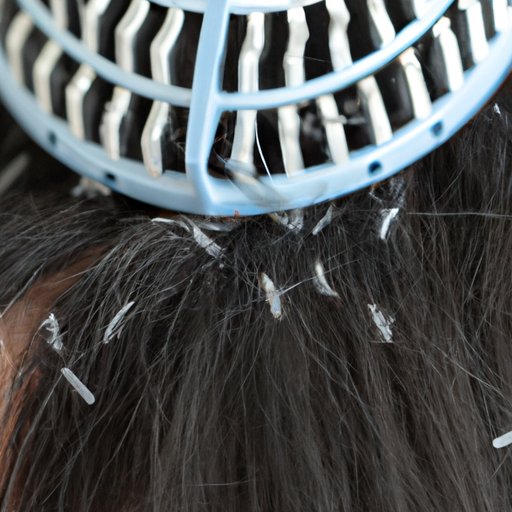
Introduction
Lice infestations are a common problem, especially among children, and can be both uncomfortable and embarrassing. If you suspect that you or someone in your household may have lice, it’s important to act quickly to prevent the infestation from spreading. In this article, we will explore the telltale signs of lice infestations, how to properly detect and confirm them, and what steps to take if you find that you or a loved one has lice.
The telltale signs of lice infestation: What to look for and how to identify them
The first step in detecting a lice infestation is to be aware of the common symptoms. The most obvious sign is itching, particularly around the scalp, neck, and ears. You may also notice redness and irritation on the scalp and skin, as well as small bumps or sores. Additionally, lice may be visible in the hair or on the scalp.
To identify lice, it’s important to know what they look like. Adult lice are about the size of a sesame seed and are typically tan or grayish-white. They have six legs and are wingless. Lice eggs, or nits, are oval in shape and are attached to the hair shaft. Nits are often mistaken for dandruff, but can be distinguished by their white or yellow color and their firm attachment to the hair.
Uncovering the truth about lice: A comprehensive guide to detecting and confirming an infestation
If you suspect that you or a loved one has lice, it’s important to properly diagnose the infestation to ensure effective treatment. One way to confirm a lice infestation is to use a specialized lice comb, which is designed to remove both lice and nits from the hair. To use a lice comb, start at the scalp and comb outward, moving slowly and methodically through the hair. Check the comb for lice and nits as you go.
Another way to confirm a lice infestation is to examine the hair for nits. Nits can be difficult to spot, but are often found around the ears, nape of the neck, and crown of the head. They may also be visible in the hair itself. If you suspect a lice infestation, it’s best to seek the advice of a healthcare professional, who can provide a definitive diagnosis and recommend treatment options.
Lice 101: A crash course on detecting and diagnosing lice infestations
To properly detect and diagnose lice infestations, it’s helpful to understand lice biology and behavior. Lice are parasites that feed on human blood and can only survive for a short time without a host. They are commonly spread through head-to-head contact, such as sharing personal items like combs, brushes, hats, and headphones.
There are several stages of lice infestations, each of which can be detected through physical symptoms. In the early stages, lice and nits may be difficult to spot, but as the infestation progresses, you may notice increased itching, redness, and irritation on the scalp and skin. In severe cases, you may even be able to see active lice crawling on the scalp.
Don’t let lice go unnoticed: How to check for lice and what to do if you find them
If you suspect that you or a loved one has lice, it’s important to take action to prevent the infestation from spreading. The first step is to check all members of the household for lice using a specialized lice comb. It’s important to use a separate comb for each person to avoid cross-contamination.
If you find that you or someone in your household has lice, there are several treatment options available, including over-the-counter and prescription medications, as well as natural remedies. It’s important to follow the instructions carefully and to treat all members of the household, including those who do not show any signs of infestation.
In addition to treatment, it’s important to take steps to prevent the infestation from spreading. This may include washing all bedding, clothing, and personal items in hot water, vacuuming carpets and furniture, and avoiding close contact with others until the infestation has been eradicated.
The ultimate lice checklist: How to spot a lice infestation and prevent it from spreading
To summarize the key points from the previous sections, here is a checklist of what to do if you suspect a lice infestation:
– Look for common symptoms such as itching, redness, and irritation on the scalp and skin.
– Check the hair for lice and nits using a specialized lice comb and examine the hair for nits.
– Seek the advice of a healthcare professional for a definitive diagnosis and treatment recommendations.
– Treat all members of the household, including those who do not show any signs of infestation.
– Take steps to prevent the infestation from spreading, such as washing bedding, clothing, and personal items in hot water, vacuuming carpets and furniture, and avoiding close contact with others.
Conclusion
In conclusion, lice infestations are a common problem, but with proper detection and treatment, they can be easily eradicated. If you suspect that you or a loved one has lice, it’s important to take action quickly to prevent the infestation from spreading. By following the steps outlined in this article, you can effectively detect, diagnose, and treat lice infestations and take steps to prevent them from occurring in the future.




